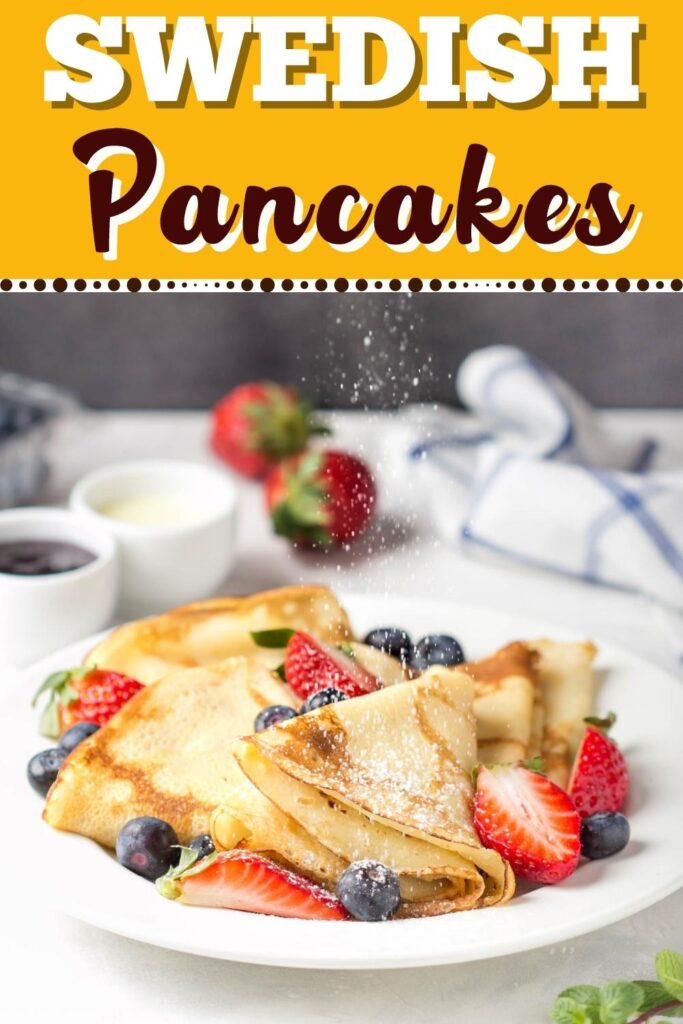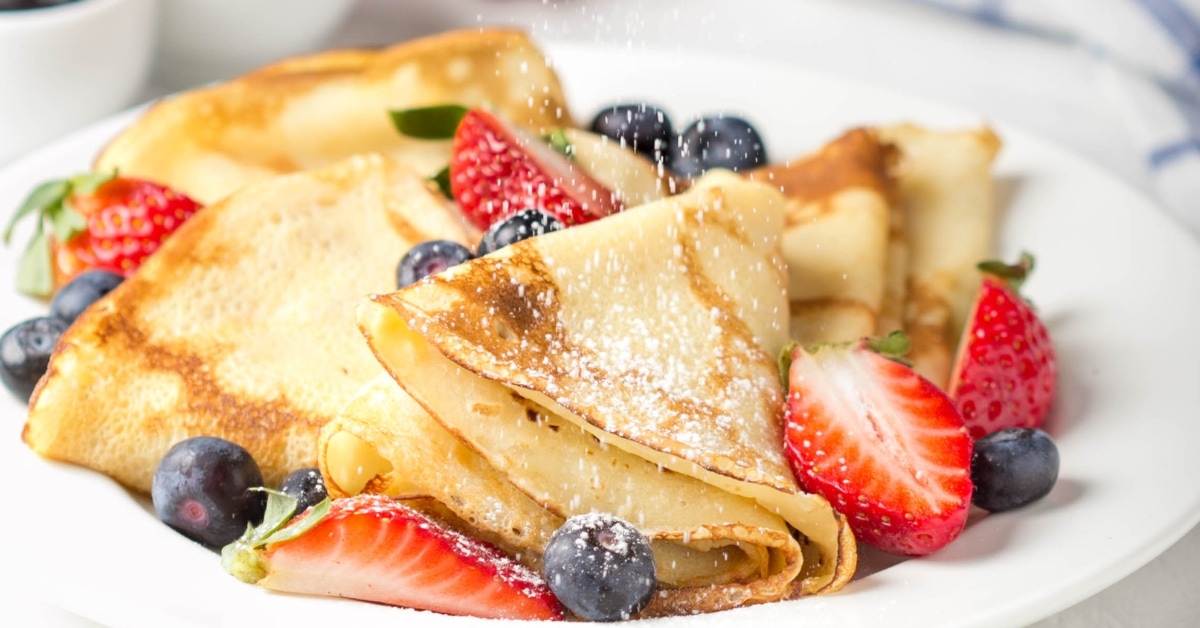Swedish pancakes are like a cross between American pancakes and crepes.
In fact, many people compare them to French crepes since they’re both delicate, fluffy, and bursting with flavor.
Of course, one big difference between the two is that Swedish pancakes come from Sweden, while French crepes…well, you get the idea.
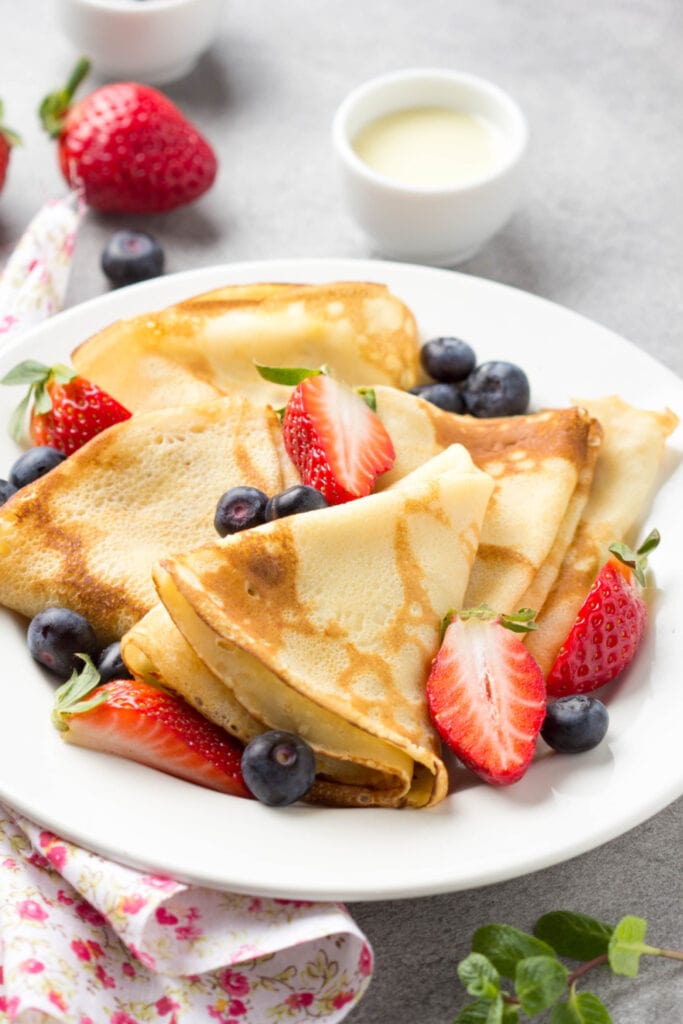
Whatever you call them, Swedish pancakes are total crowd-pleasers.
They can be as sweet as you want and work well for breakfast or dessert. You can even make them in advance and store them in the fridge for convenience.
There’s really no downside to Swedish pancakes. So let’s find out how to make them, shall we?
What Are Swedish Pancakes?
Simply put, Swedish pancakes are divine! But what really sets them apart from any other recipe?
Swedish pancakes are made using a thin, egg-rich batter with a high ratio of wet ingredients to dry. This gives them a lighter, fluffier texture than classic French crepes.
They’re cooked in a skillet, thin enough to be rolled or folded, and most often served with jam and whipped cream.
Many people make them with something called “the 3-2-1 recipe”. It includes only the following ingredients:
- 3 eggs
- 2 cups of milk
- 1 cup of flour
The recipe here is a little more involved, but it’s my favorite. The egg-heavy batter turns out the lightest, airiest pancakes possible.
And despite their thinness, they’re still wonderfully fluffy and filling.
As mentioned, because they’re so thin, most people roll or fold them to eat them. And the best jam to serve is lingonberry.
But you can use whatever toppings you prefer, of course.
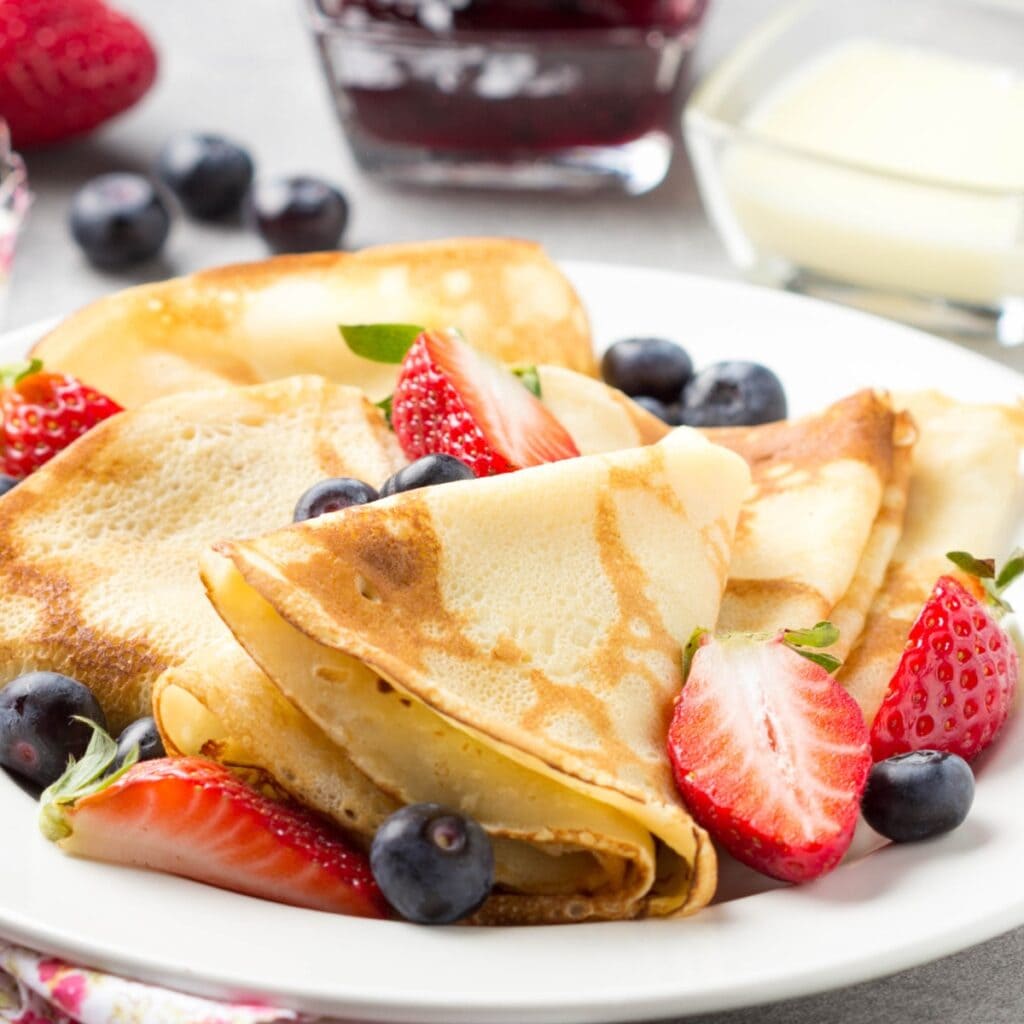
Ingredients
Here’s what you’ll need for this particular Swedish pancakes recipe:
- Eggs – Swedish pancake batter calls for more eggs than most American recipes. That’s what gives them their thin but fluffy texture. That said, if you try to substitute the eggs (like with mashed bananas), they won’t turn out quite right.
- Milk – The milk in the recipe keeps the pancakes thin and light. I typically use 2% milk because that’s what I have on hand. Any variety will work, though.
- Flour – You’ll want to stick to all-purpose flour for this recipe since it’s the easiest to work with and is relatively inexpensive. And don’t be tempted to add more – the ratios are spot on.
- White sugar – Many recipes for Swedish pancakes don’t call for sugar. However, I like to add it because it gives them a nice hint of sweetness. Feel free to leave it out if you want them more savory.
- Salt – Salt is one of those ingredients that everything needs. Even sweet recipes like this one benefit from a dash of salt. Use regular kosher salt.
- Butter – Be generous while buttering the griddle. Butter gives the pancakes phenomenal flavor and also keeps them from burning or sticking.
If you want to use add-ins, such as vanilla or almond extract, go right ahead!
But if you’re looking for a good, old-fashioned Swedish pancake, these ingredients are all you’ll need.
How to Make Swedish Pancakes
Here’s how to make Swedish pancakes:
1. Grease the skillet. Use real butter. Then, set the heat to medium to let the butter warm in the pan.
2. Mix the eggs and milk. Use a mixer to whisk the eggs in a bowl for 3 to 5 minutes. Then, add the milk. Stir to combine.
3. Mix the dry ingredients. Use a separate bowl to combine the dry ingredients. (Flour, sugar, and salt.) Whisk them by hand until everything is incorporated.
4. Combine the two mixtures. Add the dry mix to the egg mix. Gently stir with a spatula until the two are combined. Don’t over-mix!
5. Cook. Use a tablespoon to spoon the batter into the skillet. Spread each spoonful until it’s thin and wide.
Then, cook for 1-2 minutes until the bottom turns golden brown. Flip the pancake and cook the other side for 1-2 minutes.
Repeat until you’ve used all the batter.
6. Top and serve. Top the pancakes with whatever toppings you like best, and enjoy!
Are Crepes and Swedish Pancakes the Same?
Crepes and Swedish pancakes are not the same, though they look similar.
Visually, it’s difficult to tell them apart. But in terms of taste and texture, crepes are denser and chewier and can be sweet or savory.
In contrast, Swedish pancakes are lighter, fluffier, and almost always served sweet.
Both are thin, golden-brown pancakes that people usually roll or fold to eat. But the Swedes prefer them with jam or a little powdered sugar.
Crepes, however, frequently come with savory fillings, such as cheese and ham.
Both are delicious, though, and I’m a massive fan of whichever you want to make me.
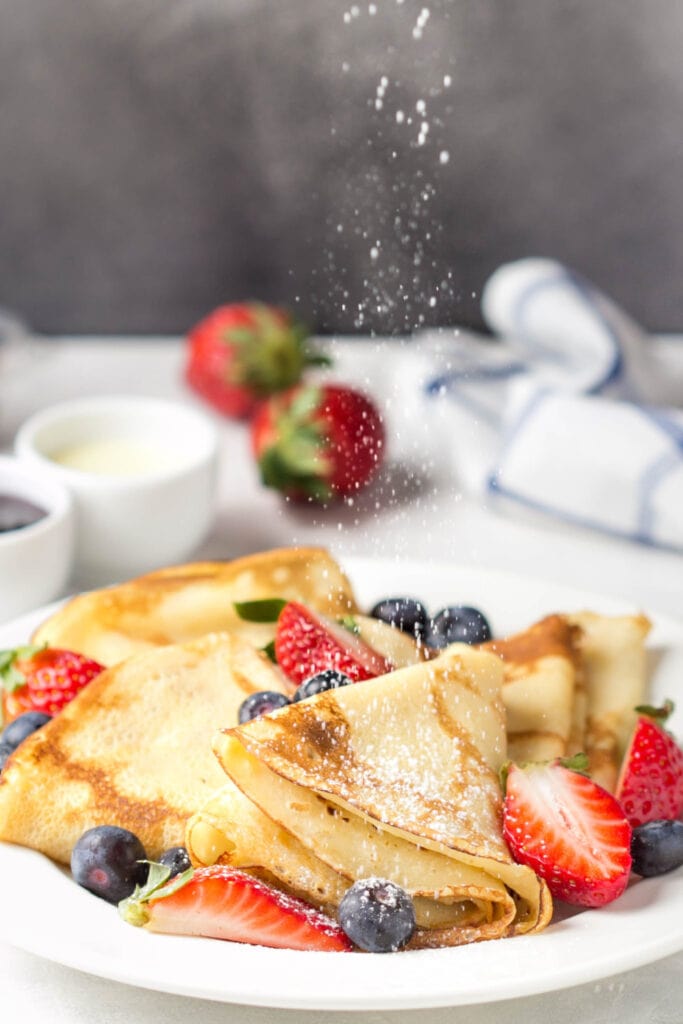
Can You Freeze Swedish Pancakes?
Swedish pancakes freeze very well, provided they’re cooled completely first.
Here’s how to do it:
- Layer the pancakes with parchment paper in between them to prevent sticking.
- Place them in freezer-safe bags.
- Write the date on the front.
- Freeze the pancakes for no more than a month.
This method is best because it lets you pull one or two at a time without having to thaw the whole batch.
When it comes time to reheat them, you can do so on the stove. Here’s how:
- For best results, let them thaw in the fridge overnight. If that’s not possible, let them sit on the counter for approximately 15 minutes before heating them.
- Add a little butter to a pan. Set the heat to medium.
- Warm the pancakes for about a minute. Be sure to flip them once halfway through.
You can also nuke them in the microwave for 20-30 seconds. I use 50% power and warm two at a time.
Can You Make Swedish Pancakes Ahead of Time?
Swedish pancakes are ideal for making ahead of time because they store well in the fridge.
Simply cook and cool the pancakes. Then, layer parchment paper between each one and store in an airtight container in the fridge for up to 3 days.
This is an excellent idea if you want to make a big breakfast and save on prep time.
More Pancake Recipes You’ll Love
Oatmeal Pancakes
Chocolate Chip Pancakes
Eggnog Pancakes
Jiffy Cornbread Pancakes
Trisha Yearwood’s Blueberry Pancakes
